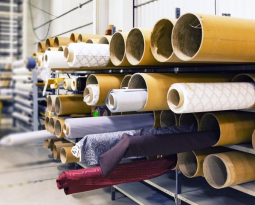Montana Patent of the Month – April 2023
Bridger Photonics, Inc. is a company at the forefront of laser radar systems that employ frequency-modulated continuous wave (FMCW) technology to achieve high-precision distance measurements. Existing LiDAR systems are limited in terms of signal strength and update rates, which can impact their effectiveness in certain applications. FMCW technology, on the other hand, uses optical heterodyne detection that can provide quantum-noise-limited measurement signals and allow measurements with a large dynamic range of signal powers.
In a recent development, Bridger Photonics has created a method that involves producing an interference signal from an FMCW laser radar system by directing a laser beam toward an object and combining the reflected laser beam with an oscillator portion of the laser beam. Multiple temporal segments of the interference signal are processed, with each corresponding to a segmented bandwidth that is less than the chirp bandwidth. By combining results from processing the multiple temporal segments, distance measurements can be determined with a high degree of accuracy.
What sets this method apart from existing techniques is its ability to partially compensate for Doppler noise, speckle noise, or both. This is achieved by processing different sets of temporal segments together, where each set being in opposite directions. Furthermore, the update rate of the FMCW laser radar system is faster than the inverse of the laser chirp duration, which enables measurements to be taken more frequently.
This groundbreaking technology has the potential to revolutionize a wide range of applications, from autonomous vehicles to mapping and surveying. Bridger Photonics, Inc. continues to lead the way in the development of FMCW laser radar systems that offer unmatched accuracy, precision, and reliability.
Are you developing new technology for an existing application? Did you know your development work could be eligible for the R&D Tax Credit and you can receive up to 14% back on your expenses? Even if your development isn’t successful your work may still qualify for R&D credits (i.e. you don’t need to have a patent to qualify). To find out more, please contact a Swanson Reed R&D Specialist today or check out our free online eligibility test.
Who We Are:
Swanson Reed is one of the U.S.’ largest Specialist R&D tax advisory firms. We manage all facets of the R&D tax credit program, from claim preparation and audit compliance to claim disputes.
Swanson Reed regularly hosts free webinars and provides free IRS CE and CPE credits for CPAs. For more information please visit us at www.swansonreed.com/webinars or contact your usual Swanson Reed representative.

















